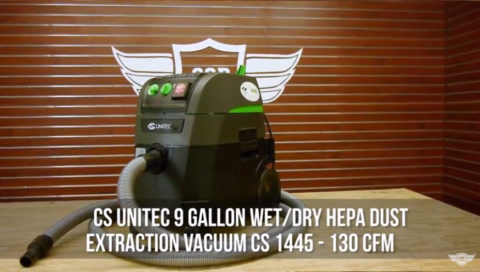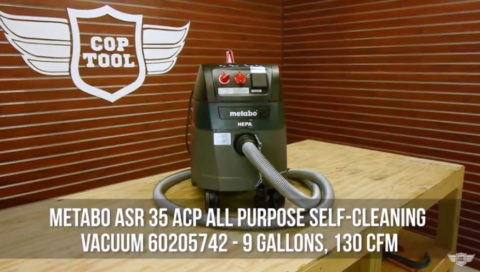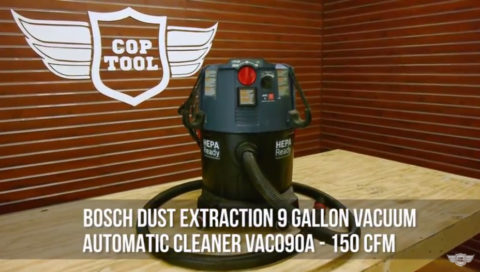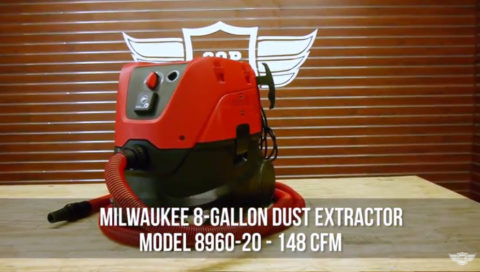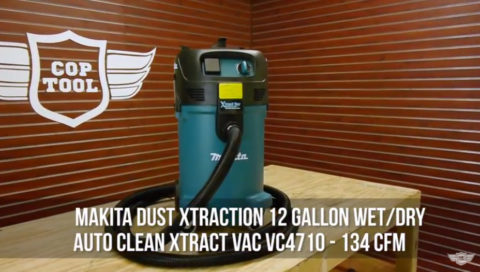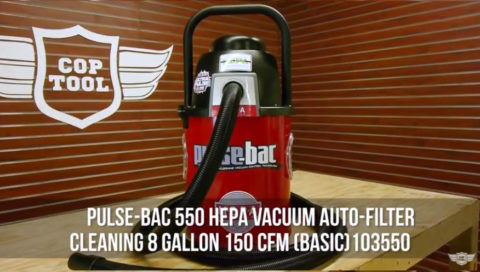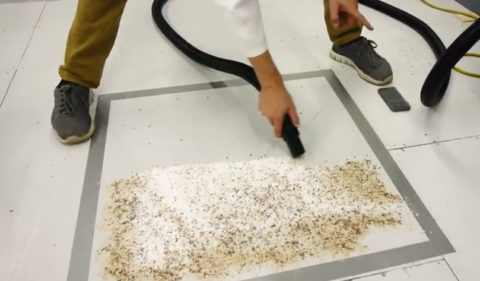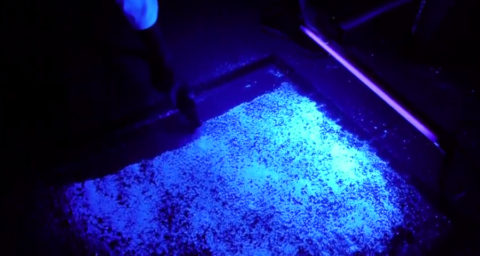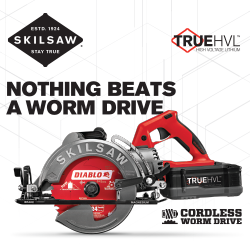*** Important to note we are not testing if these vacs meet the OSHA Standards, we are only testing usability & performance. We are relying on the manufacturer testing to be accurate in that all 6 competitors do meet the standards!
The new OSHA Silica Standard is officially now a finable offense, having been in effect for over a year already they were not issuing fines before September 23rd, 2017, that has now changed. We have previous covered several topics related to this new standard including What is OSHA Silica Standard, what are steps can you take for your Company Silica Assessments and what is the Difference between Table 1 vs Objective Data testing. This topic is huge and worker safety is extremely important which we could never cover it all but we did want to take a deeper dive into what is one of the most important components, the Dust Extraction Vacuums used as the center piece for many of engineered controls.
Who Are the Competitors
It was our goal to get the top dust extraction vacuums that meet Table 1 compliance with a built in automatic filter cleaner and HEPA filter compatible. Also we were looking for at least 125 CFM to use 5” capacity blades/tools and hoping for an outlet to plug tools into which is not only super convenient but potentially much safer as you’ll never accidentally run the tool without the vac.
CS Unitec CS 1445 H ($734) New price $599
The CS Untec 9 gallon CS 1445 H is on the lower end for CFM at 130. It does come with HEPA filters (any of their vacs ending in “H”), the filter is a two filters system, 15’ hose and 26’ power cord. It does have power outlet to turn off/on with an accompany tool. *** BIG UPDATE (9/29/2017) the price magically just fell to $599 inline with Bosch, Milwaukee and Dewalt!!!
Metabo ASR 35 ACP ($592)
The Metabo 9 gallon ASR 35 ACP is very similar to the Cs Unitec in many ways, same 130 CFM, same duel filter setup which filters fit either (not recommended) as well as power outlet. There are some slight differences the Metabo comes with a 10’ hose and a Class M filter (99.9%) not their Class H (HEPA) filter (99.995%) which we will talk about more below.
Bosch VAC090A ($599)
The Bosch 9 gallon VAC090A has 150 CFM, which means it can meet Table 1 requirements for a 6” grinder. *** BIG UPDATE (9/29/2017) Bosch just changed these units to come with HEPA filters and fleece bags, make sure if you order one you get these items included FREE *** With these items included you will be Table 1 compliant for all applications!
Milwaukee 8960-20 ($599)
The Milwaukee 9 gallon 8960-20 has a similar external look to the Bosch unit however only 148 CFM. When you open it up you realize the Milwaukee unit has some nice differences. This filter system is 2 stage, the standard filter looks very similar to Bosch which is not HEPA rated. However after that filter air goes to a HEPA filter which is screwed down. This is smart for several reasons, 1 uses cheaper filters (under $70) for almost all the filtration, 2 no confusion on filters or HEPA they are all HEPA and 3 compliance is easier all Milwaukee’s are HEPA.
Makita VC4710 ($559)
The Makita 12 gallon VC4710 is a little different from the rest, as the only 12 gallon it’s a good bit larger. While the other brands offer a smaller unit more tailored to silica this Makita is sort of their general purpose unit for now. They are leading the way on some new cordless vac solutions which should be coming out soon. The CFM rating is 135 which is surprisingly low for what our testing was against other 150 CFM units.
Pulse-Bac 550 ($989)
The Pulse-Bac 9 gallon 550 Basic is sort of a whole other animal. The Pulse-Bac brand is focused on larger applications with units at 175 CFM, 300 CFM and 600+ CFM. These vacs are all built for the toughest environments like collecting spent shells at gun ranges and other hazardous applications. The 550 is the baby of the bunch, starting price tag is already significantly higher with no features, wheel, power outlet, longer cord, all features that will adding to the bottom line.
Why no DEWALT or HILTI Vacs??
We had invited both Dewalt and Hilti to submit vacs as they are 2 big names in this space with Vacs we think are terrific competitors in thsi space. The Dewalt DWV010 or DWV012 would have either/both been good to see. The Hilti VC150-6 XE or VC 150-10 XE again would have been happy to run side by side with these others but they did not make the units available for the test.
*** Important to note in case you were wondering: We would never take any monetary submission fees or require a tool to be donated for any tool comparison test, we simply ask if it meets our criteria, it be sent to us and to get it back either pickup or send a shipping label or we can do a giveaway for our readers. ***In this particular comparison every one of these vacs is going back to the manufacturer!!
So does it need to be HEPA to be Table 1 compliant?
Answer is depends on the application. Most of Table 1 applications are stated to be 99% filtrations; in Europe there are 3 levels that would meet the standard: Class L at 99%, Class M at 99.9% and Class H 99.995% which is even stricter than the US standard for HEPA of 99.97%. In the US however we don’t have these different levels of ratings so filters either say HEPA (99.97%) or literally you can’t find any info on them. Hopefully this will change and companies will start to define their other filters as well as they already do in other countries. There are some applications in Table 1 that do specify “HEPA” such as hole cleanout and because many manufacturers are not specifying when they are over 99%, many companies are simply standardizing all their vacs to use HEPA filters.
So How Did We Test Which Vac Sucks the Most
We did 3 basic tests to determine sucking power which was the focus of the above video, first we rigged up a suction power / sealed pressure test which pulled water up a tube and then we measured the height, which does bounce around a good amount which is expected. CS Unitec, Milwaukee, Metabo all were very close around 88”, Pusle-Bac at 90”, Bosch slightly over 90” and Makita at 96”. Interesting to see how these numbers do not alight with the CFM rating which was a real surprise from us.
Second we did a dry material a mix of sawdust and laundry detergent over a 2×2’ area with the identical amount 6 cups for each test. This is a real world simulation test and we times it for 30 seconds each. The results here were pretty close across the board, Makita & Pulse-Bac lead the way with the fastest cleanup times but they all finished within seconds of one another. Again Makita had a lower CFM so we would not have thought this from the numbers but after seeing the seal pressure test this makes sense.
The 3rd and final “power test” was sucking up 5 gallons of water from a fish tank. After we started we realized the Pulse-Bac was not intended for water use so had some leaking, still did this test the fastest time at 7:32 seconds but do not use for wet application. Makita was second 7.71 seconds, Bosch & Milwaukee we neck and neck at 12.69 & 12.94 respectively. CS Unitec and Metabo which again are nearly identical units both unfortunately shut off before doing the full 5 gallons of water which was surprising as they are rated for 9 gallons we would expect them to at least to 60% of that.
In testing we also looked at many usability features: cord wrap, hose length, hose durability (drove a truck over them), filter changing, rollability (over extension cords), wheel performance, locks, included accessories and overall finish. Somewhat subjective but we go over these in the video above, certainly different criteria are more/less import for different applications.
How come CFM does not equal performance?
This is the big question we were trying to answer and as of yet we can’t seem to get a straight answer. The OSHA Table 1 specifics CFM be 25 per 1” in cutting and grinding applications so there is a big push to get to 150 CFM with a handful of models changing their specs in 2017. There was one vacuum (not part of this test) that jumped from mid-130’s to over 150 CFM just before this regulation took effect with little to no actual change we could see to the repair parts breakdowns… Something seems suspect in these changes and they are very different from the results we found in our testing. How can the Makita VC4710 at 135 CFM feel noticeably more powerful than units which rate 10-15% more powerful? How can some other units we didn’t get to test change their rating 15-20% without actually changing the motor or something major? If there is some wiggle room why would Milwaukee come in at 148 CFM and not jump to 150 CFM? Lots of questions we will continue to research but currently don’t have the answers (manufacturer’s feel free to email me additional info and we will share)!
Overall Results from Out Testing
All 6 of these units were very very close in performance, it really came down to which we felt was the strongest competitor in helping users to meet the new silica dust standards. Of course when using any vac with silica you always need to follow the manufacturer’s appropriate instructions for fleece bag filters, this does vary by manufacturer, to meet any OSHA requirement you always need to follow the manufacturer’s instructions.
Since price is an important consideration for most people we look at this smaller Pulse-Bac as more of a specialty unit, there are some additional safety features, metal canisters and reasons the Pulse-Bac 550 is a nicer unit and worth the $1000+ price tag but for just meeting table 1 compliance it’s a bit on the pricy side. Looking for vacuums 175 CFM (for 7″) or higher the larger Pulse-Bac vacuums seem to find their sweet spot.
The Metabo & CS Unitec units are very similar with the CS Unitec including the HEPA filters and longer hose there is a bit of an upcharge but still consistent on pricing. For the Silica compliance both extremely solid competitors, we really like the dual filters which creates a ton of surface area meaning they will go longer before potential clogs. **** UPDATE **** Price drop on the CS Unitec makes this the better choice!
Bosch VAC090A price is lower, filters are less expensive, hits that 150 CFM target for 6” compliance with Table 1, you can attach Bosch’s L-Boxx system to the top for integrated storage and Bosch is very strong in the accompany silica accessories Dust Extraction bits, tools and other accessories. **** UPDATE **** This unit should now comes with the HEPA filter and Fleece bags (at least from good dealers) which means they’ve address our biggest complaint, it just moved up our list!!
Makita VC4710 was nearly our winner simply based of performance even though it ranked near bottom on CFM specs. Pricing is good on the unit and a duel filter setup again with a lot of surface area. The 12 gallon size is a popular for general purpose however for silica specific applications it is really much larger than what is practical. While 12 gallons of sawdust may not be a problem, even 9 gallons of silica dust would make a vac impractical to lift or change filters, 12 gallons we fear could be a danger. Also hose was less durable and the unit was more likely to tip, again a smaller 6-9 gallon unit would not have that issue.
The winner of our testing was the Milwaukee vac 8960-20, price was good, unit was well built, power was solid but what we liked most about this unit that gave it the edge was the integrated HEPA system. With all the questions about does this meet Table 1, is it HEPA, we really like that every Milwaukee unit is HEPA no questions. We also really like that the less expensive general purpose 1st filter does 99% of the work, so the secondary HEPA filter only needs replaced after many of the 1st filters gets used up. The 148 CFM means it does not meet Table 1 for 6” diameter blades, so if this is a concern the Bosch or Pulse-Bac would be needed however we found that most attachments for dust collection on grinders are either 5″ or 7″ very few options currently for 6″ attachments.



